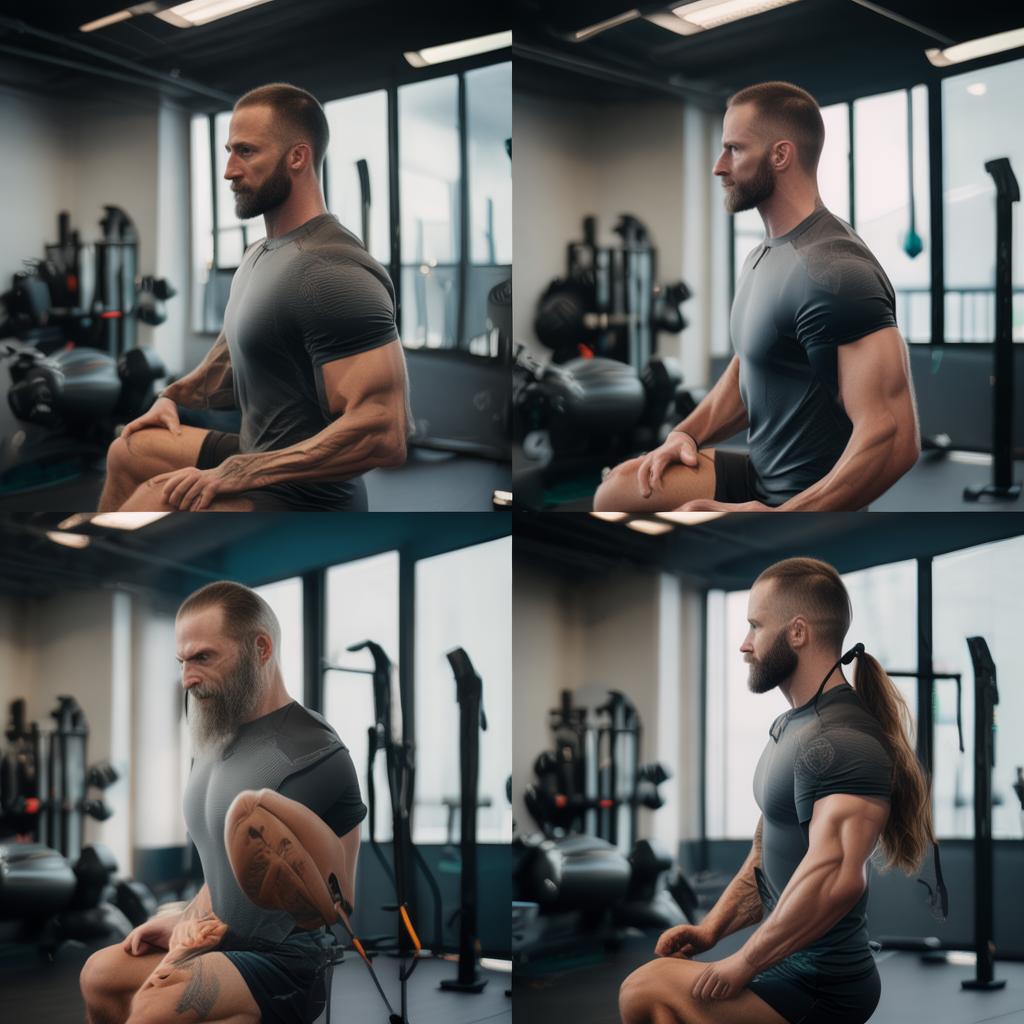Introduction
On August 20, 2023, we delve into the world of shoulder – training. Many people are somewhat resistant to overhead movements. These movements have the longest power chain and, apart from testing core stability, demand more stability from the scapulae. In shoulder training, the overhead press, whether with a barbell or dumbbell, is a typical overhead movement that’s hard to perform well and even harder to increase the weight on.
The Barbell Raise
The barbell raise is a well – known way to train the back and shoulder muscles. The targeted muscle groups include the anterior and middle deltoids, rhomboids, and even the biceps. To avoid injury, near – perfect form is required. Keep your back straight, chest up, and eyes forward. Using a curved bar can reduce wrist stress when gripping the bar. Also, don’t lift the barbell too high to prevent shoulder peak impingement.
To perform a barbell raise, stand with your feet shoulder – width apart (a comfortable position). Grasp the barbell with palms facing inwards and let it hang in front of you. Keep your core tight and back straight, then lift the barbell up towards your chin, using your elbows to guide it and keeping it close to your body. Don’t lift above shoulder height. Pause at the top and slowly lower it back to the start. Do 4 sets of 8 – 12 reps, with 45 seconds rest between sets.
Disadvantages of Barbell Raises
Barbell raises are infamous for potentially damaging the shoulders for several reasons.
First, it may lead to shoulder pain or injury. When lifting the arm, the upper arm is internally rotated at the shoulder. For those with healthy shoulders and perfect movement posture and technique, this may not be an issue. But if you have a sedentary lifestyle, use your phone a lot, or work long hours in front of a computer, your shoulders may not be in the best condition. Shoulder discomfort may cause a tingling pain during this movement, and if you already have shoulder problems, it could worsen them. Using dumbbells or kettlebells that allow free hand movement can offer some protection, but this movement still isn’t entirely healthy for the shoulders.
Second, it can cause over – developed muscles. Many people like doing push – ups, and various pushing movements can lead to overdevelopment of the anterior deltoid. Many enthusiasts don’t do additional anterior deltoid – targeted workouts. Poor posture and lack of proper training in the movement can lead to muscle tension, making the barbell raise ineffective. Instead, training the posterior deltoid, with moves like upward incline dip side planks, can improve shoulder health and injury resistance.
Third, there are better moves for shoulder training. Considering movement effectiveness, targeted muscles, and high injury risk, there are safer alternatives. As a fitness enthusiast, you may not want to risk your shoulders with barbell raises.
Alternative Shoulder – Training Moves
Anterior Deltoid Movements
As mentioned, the anterior deltoid gets more stimulation in pushing movements. While it still needs training, we should choose safer moves. Compound pushing movements like overhead presses, bench presses, and Arnold presses are good for the anterior deltoid. For isolated pushing, dumbbell front planks or rope front planks can be tried.
Middle Deltoid Movements
Overhead presses can work on the middle deltoid bundle. Select quality pushing movements and finish with relatively isolated movements. One – arm rope lateral planks and dumbbell lateral planks are good isolation movements for the middle deltoid. Do 4 sets of 12 – 15 reps each, with 45 seconds rest between sets.
Posterior Deltoid Movements
The dumbbell dip side planks are great for building a strong upper back and rear deltoids. Since many men neglect the posterior deltoid bundle, rope face pulls can also be tried. These can be done 2 – 3 times a week at the end of a workout as a finishing move for shoulder and back training. Do 3 – 4 sets of 12 – 15 reps each, with 30 seconds rest between sets.
If your shoulders are healthy and your movement posture is perfect, barbell raises can be a good move. But for most people with shoulder problems, injury is likely. Try more alternative movements, focus on the posterior deltoid and upper back, and work on improving all the muscles in your body. And remember, don’t use barbell raises as a substitute for push – ups.





